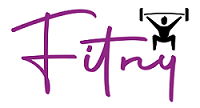Mental health applications for smartphones provide a unique experience to improve the accessibility and quality of mental health services. The number of mental health-focused mobile health apps has increased rapidly.
According to a recent study, many patients prefer cognitive therapy for depression on mental health apps for diagnosis, treatment, or assistance. Mental health apps have also been cited by public health organizations such as the National Health Service (NHS) in the United Kingdom and the National Institute of Mental Health (NIMH) in the United States as cost-effective and scalable strategies for closing the mental health care gap.
Mental health applications are available for a wide range of psychological disorders such as depression, anxiety, etc. These apps come with various designs and functions like providing cognitive therapy for depression, tracking progress, expert guidance, etc.
Based on accessibility, the National Institute of Mental Health divides mental health applications into six categories:
- Self-management
- Cognition enhancement
- Skills training
- Social support
- Symptom monitoring
- Passive data collection.
Mental health apps cover all stages of clinical care, from crisis intervention, prevention, diagnosis, primary treatment, supplementation and in-person counseling, and symptom management after treatment. Due to ease of habit, low effort expectancy, and high hedonic motivation, mobile apps are a good option for psychological care delivery instead of other platforms.
Here are a few essential features of effective mental health apps:
- Increase patient engagement
Patients must be genuinely inspired to communicate with apps since they are commonly used on their own time without clinical supervision. According to a recent study, patient motivation can be enhanced by introducing real-time engagement, use alerts, and gamified experiences.
- Easy user interface (UI) and experience
Simple, intuitive user interfaces are emphasized in technology-based behavior change models to achieve faster behavior change through reduced cognitive demands. Working memory is often compromised in patients suffering from depression or anxiety. Apps for this demographic must be created with a low cognitive load or the cumulative amount of mental activity put on working memory. A simple user interface decreases cognitive load and improves learning ability. The use of pictures rather than text, shortened sentence lengths, and inclusive, nonclinical language are all features that minimize cognitive load.
- Psychosocial capabilities
While psychological conditions are often comorbid, few mental health apps specifically employ unique methods to address shared symptoms across disorders. Since comorbid disorder treatments are usually similar in terms of delivery and content, transdiagnostic Online Therapy in India apps can enhance patient involvement and treatment effectiveness by reducing the time and effort necessary to communicate with multiple comorbid disorder apps.
- Self-monitoring features
Emotional self-awareness (ESA), which has been linked to anxiety, depression, and drug abuse, can be increased by app-based features that enable users to self-monitor their mood by regularly monitoring their emotions, attitudes, and actions. Emotional self-awareness, or the ability to recognize and appreciate one’s feelings, has been shown to alleviate mental illness symptoms and develop coping skills.
Mobile applications have a lot of promise when it comes to delivering high-efficacy mental health treatments. Apps have emerged as a promising tool to fill the mental health treatment gap, given the global shortage of psychiatrists and the shortage of mental health care access in rural areas. Technology can revolutionize how mental health care is provided and received, but it will take the collective mobilization of research, policy, and design to achieve this aim.








